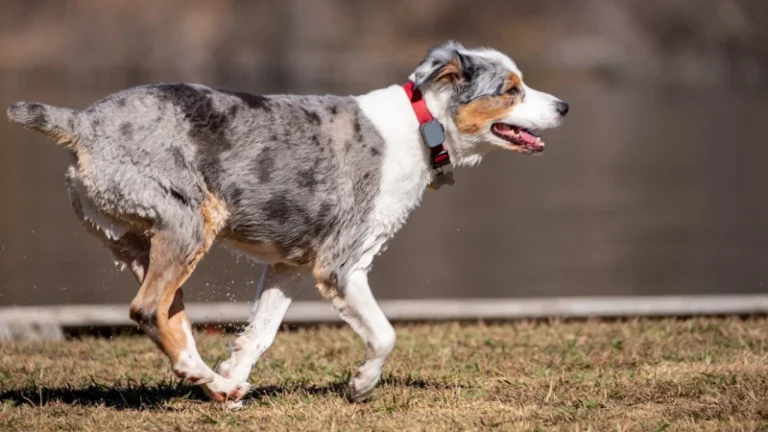As a dog owner, ensuring your canine companion stays safe within designated areas of your property is a top priority. However, effectively setting physical boundaries can be challenging without proper containment solutions. This is where innovative GPS wireless dog fence systems provide an ideal approach.
What Are GPS Wireless Dog Fences?
GPS wireless dog fences establish a virtual “geo-fence” perimeter without burdensome wires or barriers. A small GPS-enabled receiver on your dog’s collar communicates with orbiting satellites to determine their location. If your dog wanders outside the predetermined boundary lines you set, the system triggers automatic alerts.
When paired with GPS tracking, wireless fences provide dog owners more flexibility and control over monitoring movable confinement areas compared to outdated underground wire fences.
Key Benefits of GPS Wireless Fences
Lightweight Comfort
Without heavy correction collars, GPS tracking collars are far more comfortable for prolonged wear. Powered by lightweight rechargeable batteries, high-quality receivers only weigh a few ounces.
Expandable Boundaries
With reliable GPS tracking capabilities, wireless dog fences allow for adjustable, customizable multi-zone coverage across your entire property without buried wire installation headaches. Easily set access permissions for off-limit garden areas without restricting your backyard.
Precision Tracking
Utilizing advanced GPS tracking technologies, wireless dog fence systems provide precise location tracking and boundary awareness for better safety. On-demand tracking helps you monitor your dog’s movements and location history through user-friendly phone apps and web portals at all times.
Smart Automation
Quality GPS dog fence systems incorporate smart learning algorithms in their collar receivers. This allows dogs to intuitively learn the virtual fence boundaries through audio cues, stimulations, or a combination over time for consistent reinforcement without frustration.
Affordability
Since DIY installation only requires perimeter transmitter plug-in and collar activation, wireless dog fences provide expansive, customizable containment at just a fraction of the cost of full wired/wood fences. Value pricing with included collars ranges from $200 to $500 for most reliable systems with unlimited free boundary adjustments.
Understanding Collar Correction Options
Customizing the right mix of correction methods via the GPS receiver collar helps dogs respect fence boundaries without negative experiences. Most systems offer multiple options:
Audible Warnings
Collars issue a series of escalating beeping tones when approaching the boundary zone. This audible alert allows dogs the chance to self-correct.
Static Stimulation
If warnings are ignored, collars can deliver mild static correction stimulation pulses to get the dog’s attention until they return to the containment zone. Intensity levels are adjustable as a “tap on the shoulder” sensory cue more than a painful jolt.
Vibration Feedback
As an alternative to stimulation methods, some collars rely solely on strong vibration pulses for the same awareness/deterrent effect without actual electrostatic correction. Vibration is also useful for hearing-impaired dogs.
Spray Deterrents
Spray collagen deterrent collars also provide a stimulation-free way for dogs to get the message to avoid crossing set GPS boundaries. An automated burst of scent cues them to turn around.
Proper Introduction is Key to Success
While innovative GPS wireless fences provide state-of-the-art convenience, nothing replaces proper introductory conditioning between your dog and the containment system. Rushing the process can undermine effectiveness.
Here are some proven tips when getting started:
- Slowly introduce your dog to wearing the active training collar for gradually longer periods over 2-3 weeks. Reward them with praise and treats for leaving it undisturbed to build tolerance.
- Carefully walk your dog via leash around the set virtual perimeter for at least 2 weeks so they fully understand the new basement through auditory/tactile cues from the collar. Use those collar cues to redirect them away from the boundary instead of corrections. Provide ample praise when they demonstrate understanding.
- Verify any identified “weak spots” in boundary signal coverage around your property and adjust the transmitter position as needed. Test the collar at the actual boundaries.
Proper conditioning cements the necessary awareness and respect in dogs so they can exercise their natural roaming instincts while remaining safely confined at all times. The more patient the introduction process, the better dogs will respond for years of reliable containment.
Customize Your Wireless Fence for Success
One advantage of advanced GPS dog fence platforms includes deep customization potential reflecting each pet’s size, age, temperament and environmental context for optimized safety management.
Beyond establishing basic boundary lines, most systems allow granular adjustments like:
- Unique grid zoning for specific backyard access points
- Variable warning tone/stimulation intensity settings
- Customizable stimulation ramp-up sequences
- Perimeter breach thresholds by distance/time
- Remote lockout of collar corrections
Such flexibility ensures a good fit for dogs small and large while preventing false positives. Check that any wireless fence allows both minor tweaks and total recalibration when needed.
While wireless GPS-based canine confinement provides safer freedom for dogs and convenience for owners, reasonable expectations are still important for satisfaction. These systems do not guarantee miraculous obedience training for extremely determined runners/roamers. Sizeable static corrections may also be inadvisable for small or anxious pets. However, advancing innovation continues to enhance effectiveness while prioritizing better animal welfare practices.
Legal and Ethical Considerations
When it comes to the implementation of GPS wireless dog fences, both legal and ethical considerations play a crucial role. These factors are essential to ensure the well-being of the dog while complying with local regulations.
Legal Considerations
- Local Regulations: The legality of using GPS dog fences can vary significantly from one area to another. Some regions may have specific ordinances regarding electronic containment systems. Dog owners need to familiarize themselves with local laws to avoid potential legal issues.
- Homeowners’ Associations: In certain communities, especially those governed by homeowners’ associations (HOAs), there might be restrictions or guidelines on the types of fencing solutions that can be used. These rules often aim to maintain a certain aesthetic or community standard, and GPS fences might be preferred due to their invisible nature.
- Liability Issues: There’s also the aspect of liability to consider. If a dog escapes despite the GPS fence, the owner might be held responsible for any damage or harm caused by the pet. This underscores the importance of ensuring that the system is always functioning correctly.
Ethical Considerations
- Humane Treatment: From an ethical standpoint, the primary concern is the humane treatment of animals. GPS dog fences should be used in a way that does not cause undue stress or harm to the dog. This includes proper training to ensure the dog understands the boundaries without experiencing fear or anxiety.
- Animal Welfare Standards: These systems should align with general animal welfare standards, which advocate for the physical and psychological well-being of pets. The intensity of any corrective measures, such as auditory or vibration cues, should be carefully calibrated to be effective yet not harmful or overly distressing.
- Balancing Freedom and Safety: Ethically, it’s also important to balance the dog’s need for freedom and exercise with safety considerations. GPS dog fences can provide dogs with more room to roam and explore compared to traditional leashes or confined spaces, contributing positively to their overall quality of life.
While GPS wireless dog fences offer innovative solutions for pet containment, owners must navigate the legal landscape and adhere to ethical practices. This ensures not only compliance with laws and community standards but also the promotion of a safe, stress-free, and healthy environment for their canine companions.
Smart Wireless Fences Are the New Standard
Reliable GPS dog fences are the epitome of flexibility and hassle-free operation, especially when compared to traditional options like wired, wood, or chain-link barriers. These systems comprise intuitive base stations and precision-tracking collars. Together, they establish customizable “virtual leashes” without the need for cumbersome installation labor.
Automated location tracking collars using GPS satellite data keep dogs safely confined while allowing enjoyable roaming. Smart correction methods offer multiple humane but firm sensory cues when boundaries are challenged. Customizable access zones and intensity settings ensure proper acclimation.
While upfront investments are higher than traditional single-application systems, the long-term costs are quite reasonable for convenience and performance. And without property destruction from excessive digging/tunneling, wireless solutions let dogs be dogs while keeping them secure at home. So embrace the innovative possibilities of modern GPS-powered canine containment today!
The post Understanding Canine Boundaries: Keeping Your Dog Safe With GPS Wireless Fences appeared first on Shopping Kim.



